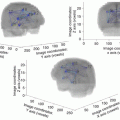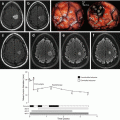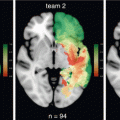© Springer-Verlag London Ltd. 2017
Hugues Duffau (ed.)Diffuse Low-Grade Gliomas in Adults10.1007/978-3-319-55466-2_2929. Emerging Therapies for Diffuse Low Grade Glioma
(1)
Department of Neurological Surgery, University Hospitals-Cleveland Medical Center and Case Western Reserve University School of Medicine, 11100 Euclid Avenue, HAN 524, Cleveland, OH 44106, USA
(2)
Department of Pathology, University Hospitals-Cleveland Medical Center and Case Western Reserve University School of Medicine, 11100 Euclid Avenue, HAN 524, Cleveland, OH 44106, USA
(3)
Case Comprehensive Cancer Center, Case Western Reserve University School of Medicine, 11100 Euclid Avenue, HAN 524, Cleveland, OH 44106, USA
Abstract
Because of the intractable nature of diffuse low grade gliomas, which always progress into higher grade, malignant gliomas, there is increased interest in the use of newer and alternative approaches in addition to conventional approached including surgery, chemotherapy, and radiotherapy. These emerging treatments include several technologies for thermal ablation and improved drug delivery as well as immunotherapy and nutritional or “alternative” therapies.
Keywords
Laser interstitial thermotherapyStereotactic laser ablationHigh intensity focused ultrasoundMRI-guided high-intensity focused ultrasoundRadiofrequencyConvection enhanced deliveryImmunotherapyNutritional therapyAlternative therapiesKetogenic diet29.1 Introduction
The roles of conventional imaging, surgical approaches, cytotoxic chemotherapy, and photon radiotherapy in the treatment of diffuse low grade glioma have been addressed in other chapters in this textbook. The purpose of this chapter is to address emerging treatments for these tumors including emerging surgical approaches to complete both thermal tumor ablation and improved drug delivery; immunotherapy, and nutritional, or “alternative” therapies.
29.2 Thermal Therapy
There are four distinct types of thermal therapy which have recently been explored for thermal ablation of brain tumors including low grade gliomas. These include laser interstitial thermotherapy (LITT), high frequency focused ultrasound (HIFU), radiofrequency ablation, and cryotherapy. The goal of the first three is to induce coagulative necrosis of the tumor by heating it to ~42–45°C. Likewise, the goal of cryotherapy is to induce focused cooling of the tumor to create ischemic necrosis for the purpose of tumor ablation. Interestingly, two of these approaches, LITT and HIFU are also being developed to improve delivery of anti-tumor agents by utilizing the thermal disruption of the blood brain barrier induced by therapy to deliver these agents precisely to the tumor. This section will focus on thermal ablation, while use of LITT and HIFU related to improve drug delivery will be addressed separately below.
29.2.1 Laser Interstitial Thermotherapy (LITT)
Laser interstitial thermotherapy (LITT), sometimes known as Stereotactic Laser Ablation (SLA) or MR-Guided laser interstitial thermotherapy (MRgLITT) is an emerging minimally invasive treatment modality designed for thermal ablation of various types of lesions. Early use focused primarily on extracranial pathology, but it has been utilized for difficult to access or unresectable intracranial lesions since 1983, though until recently intracranial use was confined to research subjects at a few centers [1]. However, the recent development of MRI-compatible lasers with software for near real-time MRI thermometry by two commercial vendors [2, 3], one with a robotic probe driver [3] has facilitated more precise and convenient treatment and the technology has become more widely utilized.
The vast majority of the gliomas treated using LITT have been high grade gliomas (Grade III–IV), but as the technology and indications have continued to evolve, and the costs and complications associated with LITT decrease [4], there is increasing interest in applying this technology to other types of lesions as well including low grade gliomas. Several series have reported treatment of low grade glioma in adults, but these are primarily retrospective in nature, provide little detail about pathology or location, and focus primarily on technical aspects of the procedure, with little outcome data [5–8]. A recent paper reported a retrospective results of a series of nine difficult to access pediatric low grade gliomas [9]. Although most were grade I pilocytic astrocytomas, at least two were diffuse tumors which appeared decrease in volume for more than a year post-operatively, with only one complication (11.1%). However, given recent improvements in both software and delivery systems, promising preliminary results, and increasing acceptance with both two main neurosurgical journals devoting special issues on this technology within the last year [10, 11], it is expected that indications for LITT will continue to expand and will likely include treatment of low grade gliomas. However, at present, further studies are required to show outcome benefit or equivalence of this therapy as a treatment modality for diffuse low-grade glioma.
29.2.2 High Intensity Focused Ultrasound (HIFU)
High intensity focused ultrasound (HIFU), sometimes called MRI-guided high-intensity focused ultrasound (MRIgFUS) or abbreviated as HUFUS, uses focused ultrasound to thermally ablate intracranial lesions, create precisely localized disruption of aberrant functional tracts, or disrupt the blood brain barrier at very specific locations improve drug delivery. The technology for HIFU in the late 1980s and early 1990s required that the patients undergo craniectomy pre-operatively so that the ultrasound would not need to penetrate the skull [12, 13]. One early of 17 patients included 14 with low grade gliomas treated with CT and ultrasound demonstrated safety, but little demonstrable clinical efficacy [12]. Subsequent studies primarily focused on high grade gliomas (anaplastic astrocytomas and GBMs) [13]. However, this approach appears to have fallen out of favor for more than three decades likely due the need for craniectomy and lack of demonstrable efficacy. However, recent advances in the technology have enabled the procedure to be performed non-invasively for GBM in the MRI after craniectomy to create a bone window [14, 15], and more recently, through an intact skull in cadavers [16] then in patients with deep GBMs up to 2.5 cm in diameter [17]. While current studies of HIFU are early stage trials for patients with brain metastasis [18], multiple preclinical studies are currently ongoing. HIFU was approved by the FDA for treatment of essential tremor in July 2016, and additional studies are planned which will eventually include diffuse low grade glioma [19].
29.2.3 Radiofrequency Ablation
Radiofrequency ablation has demonstrated safety and efficacy over many years in the generation of neurolytic lesions for the treatment of trigeminal neuralgia. In the last decades, there has been anecdotal use of radiofrequency to treat both extracranial and intracranial lesions, though no large case series have been reported [14, 20]. Recent case reports have demonstrated efficacy in the treatment of hypothalamic hamartomas [21, 22]. Until recently, the technology could only create small lesions and not been MRI compatible, thus limiting application in patients. However, recent studies have demonstrated that radiofrequency can create lesions up to 3 cm in large animals [22, 23] and units compatible with low-field MRI imaging have been demonstrated making future applications for gliomas of all grades likely in the future.
29.2.4 Cryotherapy
Cryotherapy has proven efficacy for the treatment of extracranial tumors particularly liver metastasis, where a minimally invasive approach has similar efficacy to open surgery with minimal blood loss. Until recently however, while cryotherapy demonstrated efficacy in the creation of intracranial lesions in large animal models [24], the technology was not MRI compatible which hindered intracranial applications. Recent MRI compatible units have demonstrated the ability to create lesions in porcine brain with near real-time MRI imaging with minimal toxicity [25]. Preclinical studies are currently underway though no current studies have been announced for low grade gliomas [26, 27].
29.3 Surgical Approaches to Improving Drug Delivery
The anatomical properties of the central nervous system lead to unique challenges in drug delivery. Many chemotherapeutic agents have significant systemic toxicities that limit the doses that can safely be given. In addition, most have minimal penetration of the blood–brain barrier which limits their efficacy in the treatment of intracranial tumors. Thus, numerous approaches have been designed to bypass the blood brain barrier to improve drug delivery. These include: (1) placing drug directly into the brain using polymers, Intrathecal administration of therapeutic agents and CED; (2) modifying the blood-brain barrier directly using methotrexate, mannitol, HIFU or LITT or (3) design of drugs which better penetrate the blood–brain barrier. Polymers are FDA approved for GBM (i.e. Gliadel wafer) but have rarely been utilized for low-grade glioma. Intrathecal administration of therapeutic agents bypasses the blood–brain barrier, but distribution outside the ventricles is limited by diffusion and thus this approach has some efficacy for leptomeningeal disease, but limited efficacy for intraparenchymal tumor [28]. Design of novel chemotherapeutic approaches is covered in other chapters. Here we will focus on CED, HIFU, and LITT.
29.3.1 Convection Enhanced Delivery (CED)
Convection-enhanced delivery (CED), first described in 1994, relies on convection, also referred to as bulk flow, to distribute a molecule through brain tissue by driving the agent through stereotactically placed catheters driven by positive pressure gradients to enhance the natural distribution that occurs via diffusion [29]. CED has primarily been implemented in the delivery of chemotherapeutic agents for malignant gliomas. From 1997 to 2010, 13 stage I/II trials and a single phase III trial evaluated the use of conjugated immunotoxins (N = 8), conventional chemotherapeutics (N = 2), radioantibodies (N = 1), a lysosomal vector (N = 1), a genetically engineered virus (N = 1) and an immunologic oligonucleotide (N = 1) for the treatment of high grade gliomas [30, 31]. Unfortunately, despite preliminary evidence from the earlier phase II studies, the phase III study failed to demonstrate efficacy [32]. Challenges include uncertainty about the optimal agent to be delivered, optimization of cannula design, optimization of trial design (i.e. intra-tumoral vs intracavitary), optimization and guidance for canula placement, as well as assessing catheter placement, reflux, and drug delivery. CED has also been utilized for pediatric patients with diffuse intrinsic pontine gliomas (DIPG) with similar challenges [33, 34]. Since the failure of the phase III trial in 2010 [32], the field has been “on hold” and the first new trails have recently opened for GBM. Though CED has not been thoroughly studied for use in the treatment of low grade gliomas, it offers promise for the future as a way to deliver therapeutic agents directly to brain tumor tissue without inducing systemic toxicity and trials of CED for low grade gliomas will likely be performed if success is noted in the treatment of current high grade gliomas.
29.3.2 HUFU-Mediated Drug Delivery
In addition to ablating tumor with thermotherapy, there is active investigation into use of HIFU improved drug deliver to intracranial gliomas either by transiently and specifically breaking down the blood–brain barrier, or by activating various chemotherapeutic agents local using HIFU [14, 35]. An ongoing study to assess the efficacy of HIFU in disrupting the blood–brain barrier is currently underway in Canada for patient with malignant brain tumors, and this is an active area of preclinical investigation [18]. At present, there is no data demonstrating efficacy of this approach, and as noted earlier, the focus is currently on malignant gliomas. However, if this approach proves to be efficacious, it will likely also be applied to low grade gliomas.
29.3.3 Use of LITT to Improve Drug Delivery
29.4 Immunotherapy for Low Grade Glioma
There is great current interest in immunotherapy for gliomas driven by promising preliminary results in patients with high grade glioma [38]. A recent review of the literature through December 2012 demonstrated little evidence for the efficacy of immunotherapy or tumor vaccines for patients with low grade glioma [39]. However, recent studies demonstrated immunological and clinical responses in adults with low grade glioma with improved progression-free survival of greater than 67 months [40]. Similarly, a recent case report of a dog with a spontaneously occurring gemistocytic astrocytoma, a type of low grade glioma with similar behavior in humans and dogs, demonstrated that vaccination not only induced a cellular immune response, but induced neurological improvement as well as complete resolution of the tumor for over 450 days [41]. Similarly, peptide specific immune responses as well as clinical responses have been demonstrated after peptide vaccine of children with low grade gliomas [42] including DIPGs and other brain tumors [43] which provides preliminary evidence for the efficacy of immunotherapy and tumor vaccines for patients with low grade glioma.
Stay updated, free articles. Join our Telegram channel

Full access? Get Clinical Tree






